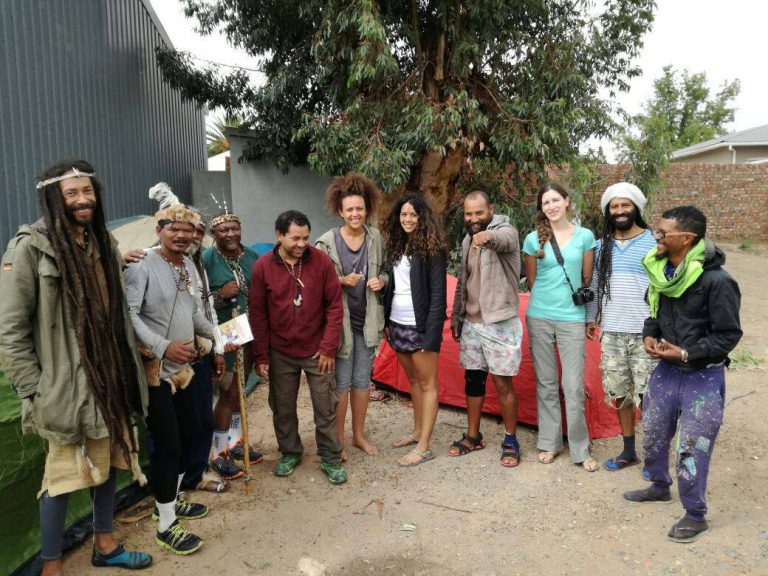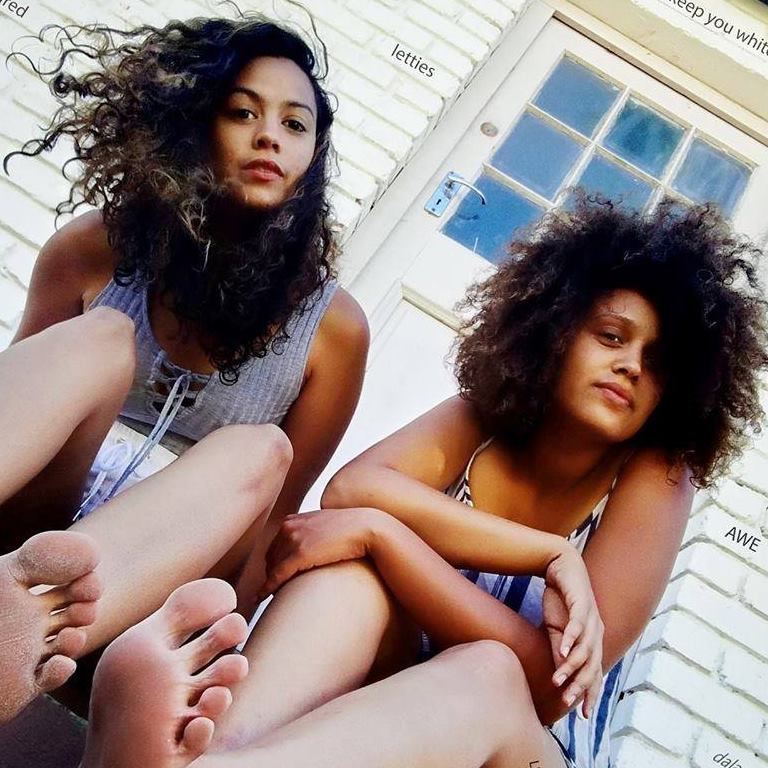
On 18 February the creators of Coloured Mentality, Sarah Summers and Kelly-Eve Koopman embarked on a 1000 kilometre journey for Khoi-San rights. Coloured Mentality is a six-part webseries that explores questions surrounding coloured identity with special guests such as actor Denise Newman and Goodhope FM presenter, Sherlin Barends.
They partnered with the activists of Indigenous Liberation Walk or Inheemse Bevrydings Staptog who guided them as they travelled on foot from Fort Beaufort (Eastern Cape) to the Castle of Good Hope, arriving on 1 March. The annual pilgrimage was documented on social media and a documentary is planned for release in the near future. Koopman and Summers discussed their experience as first-timers on the and how it impacted them.
1. What did you think or know about Indigenous culture and your heritage before the walk?
Very little, neither of us grew up with any consciousness around Khoi-San identity, this was never something that we considered part of our culture or heritage. We didn’t really learn anything about the Khoi-San at school and what we did learn was really one dimensional. Discussions around the culture and heritage never entered our social spaces.
When we met the Indigenous Rights activists after last year’s walk, we were moved by their conviction in articulating the importance of Indigenous heritage and were also propelled by the painful extent of its erasure and suppression. We wanted to explore Khoi heritage as posing powerful, spiritual and cultural alternatives that could enrich our own lives and develop our own identities. We are creating a documentary about the walk so that audiences can gain access to the possibilities and values of supporting and reclaiming indigenous identities. We hope that the film will spark greater public engagement and attention around Indigenous rights and Identity.
2. What is the significance of the route that you took and the starting and end point?
Every year the route is planned out by the Indigenous Liberation activists. Khoi people used to go on long walks for hunting and to connect with other tribes but also for more spiritually significant purposes. The Liberation Walk is a re-imagining of these rituals.
Each year’s walk also carries a specific theme, this year was themed the ‘Rebels and Heroes’ walk with a focus on celebrating and affirming significant figures, freedom fighters and leaders washed over or unnamed in our history. The Castle is usually chosen as the end point of the walk as this is viewed as a site of destruction, the symbol of the decimation of Indigenous people and the Indigenous way, the idea is to reverse this and reclaim the history.
3. What did you learn from the indigenous rights activists and the people you met along the way?
The journey re-shaped our understanding of the South African landscape, the process really enriched our understanding of our history from a decolonised perspective. We were welcomed into communities that we would have never visited before, both of us had not really been to the Eastern Cape before so travelling that part of the country was incredible.
We learned about our land and though we are not flora fundis, the activists taught a lot about the different types of fynbos and vegetation that make up our ecosystem. Both the activists and people we met on the road have similar urgent concerns shared traumas particularly related to land and access to natural resources specifically where great expanses of earth are cordoned off by fences, or access to water sources and plants are limited because of private ownership.

4. What do South Africans need to know about the rights of the indigenous people’s of South Africa?
As a country we have pledged to protect the rights of Indigenous people by signing off on the UN Declaration for Indigenous Rights (UN-DRIPS). This is not meant to be a symbolic act but comes with a range of practical implications related to issues like language and land. The Indigenous Liberation Walk seeks to draw attention to these Indigenous rights and the activists call for the ratification of this bill. Despite having a range of dialects none of the Khoi and San languages have been made official. Indigenous people are deeply rooted to the land and the survival of the indigenous way of life depends on access and rights to traditional lands, plants and natural resources.
5. What surprised you the most about the experience? Anything you weren’t expecting?
Although the walk was draining, it was cool that once we got into the mindset and routine of walking such long distances daily our bodies quickly acclimatised. We had our fair share of blister and aches and pains but once we became mentally committed to covering the distances our bodies cooperated pretty well and despite the pain the experience of walking was often really relaxing.
Also the expressions of kindness we encountered were incredible. So many people, schools and organisations were incredibly generous and willing to host us and feed us and offer up whatever sleeping space they had available. Some people along the side of the road would stop to give us fruit, water or sweets. People passing by would often hoot, raised their fists in acknowledgement. Once you’ve been walking for a couple of hours and your water bottle has heated up some ice or cold water from a passerby is a saving grace.
6. How have the walk and the webseries shaped your perspective or informed the way in which you think about your identity?
Throughout this process we have come into spaces of deep conflict both with ourselves and others. We have really had to consider which aspects of our identity we are deeply protective of and those that we have learned to become open to challenging, specifically when placing ourselves into a greater national context. By sharing and interrogating our experiences we can simultaneously affirm what makes us distinct, challenge our preconceptions and explore shared threads of heritage and culture that can be communally meaningful and uplifting.

7. What comes next? Would you do it again?
Perhaps we would do the walk again. We shot a feature length documentary around the walk and are currently focused on the process of post-production with the film along with Gambit films. We also co-direct with a new production company called Backyard Pitch along with filmmaker, Fuzlin Esau. We are currently looking to create new content across different mediums from our particular brown, feminist perspective.
Watch the latest episode of Coloured Mentality here:
This article, 1000km for indigenous rights, was originally posted on the Getaway Blog by Nandi Majola.